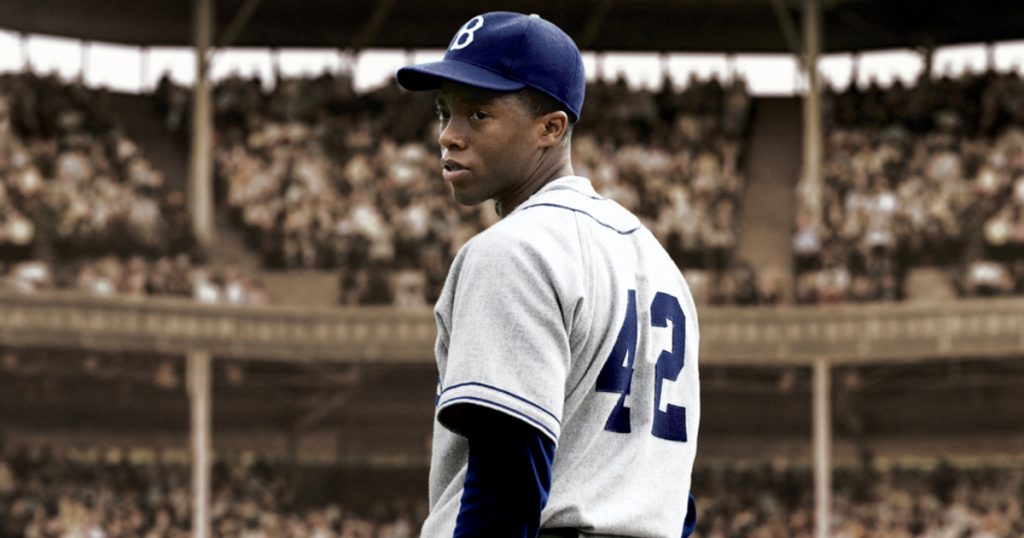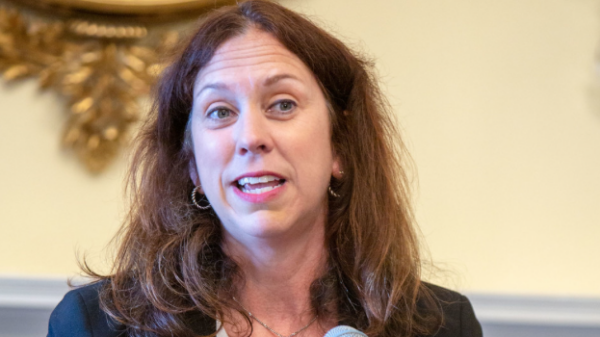By Aidan McHenry, Staff Reporter

Jackie Robinson broke Major League Baseball’s color barrier at 28 years old as its first black player, on April 15, 1947.
Today his legacy lives on, in this climate where the fight for social justice is heating up once again—sports and social action have collided hugely.
All five of the major North American sports leagues: the National Basketball Association (NBA), National Football League (NFL), Major League Baseball (MLB), National Hockey League (NHL), and Major League Soccer (MLS) allowed its players the freedom to all stand together against social injustice for the first time.
Amid these developments, Warner Bros. and Legendary studios, has re-released “42”, the biopic starring the late Bison, Chadwick Boseman, as a tribute in over 300 theaters.
The movie follows Robinson’s journey, getting signed by the Brooklyn Dodgers and breaking the color barrier. He experiences racism everywhere he goes, but he keeps a cool head and lets his tremendous talents speak for him. This biopic demonstrates Robinson’s perseverance during his life and career.
Robinson, despite dealing with substantial racism as one of the few Black players in the MLB during his career, became a six-time All-Star, Rookie of the Year, Most Valuable Player (MVP), and a champion winning the 1955 World Series.
In 1962, he became the first African American inducted to the National Baseball Hall of Fame in Cooperstown, New York.
Robinson’s success did not come without adversity, just as Black athletes still do experience today. The experience as a Black athlete has improved, but there are a few similarities that are still present.
Colin Kaepernick was ostracized from the NFL, following the year he protested the National Anthem for awareness concerning police brutality, after talking with veteran and fellow NFL player Nate Boyer.
To critics, Kaepernick may not have been a top-quality starting quarterback, but to many, his play was not what starved him of more opportunities after the San Francisco 49ers moved on from him.
Omar Waterton, a freshman Health Science major, says “It felt disrespectful because there shouldn’t be a reason why a Black male can get penalized for going against the injustices of the police system, but when white cops take action by prioritizing killing Blacks, what Kaepernick kneeled against—nobody wants to penalize them.”
“It just isn’t fair,” he added.
NBA superstars, LeBron James and Kevin Durant, were told to “shut up and dribble” by Fox talk show host Laura Ingraham after they spoke out against the actions of President Donald Trump.
In similar situations, white players have been treated differently, like when Drew Brees spoke against players kneeling in protest and was greeted with applause by Fox, unlike his black peers.
Robinson undoubtedly experienced worse treatment while playing during the 1940s and 1950s, in the pre-civil rights movement era. He was constantly berated with racial slurs and threats as he played, walked the streets, and even whilst he sat amongst his teammates. The issues then and now are similar, but he paved the way for the acceptance of future Black athletes.
“Since Jackie Robinson broke down the color barrier, sports culture has become more receptive of Black athletes—embracing them for their skills and abilities rather than negatively stigmatizing them for the superficial reason of skin pigmentation,” said freshman International Business major Brooke Whitted.
Robinson was active as an advocate for social change during his playing days and continued after, proving to be a role model for many Black athletes to follow. He was an important figure during the civil rights movement and continued to be a social activist in his later years.
His legacy in social work lives on with the Jackie Robinson Foundation, founded by his wife, Rachel Robinson, after his death, where they provide scholarships to the minority youth for higher education. Many Black athletes have followed suit, most notably James, who recently established the I Promise School in Akron, Ohio through his foundation.
Robinson exemplified what black athletes have been striving to be in this social climate.































